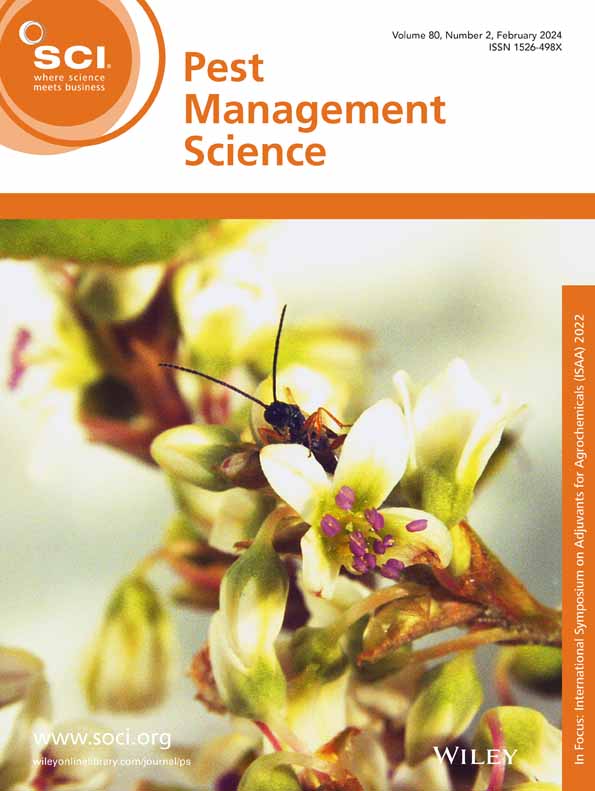Characterization of two glutathione S-transferase genes involved in clothianidin resistance in Bradysia odoriphaga
Abstract
BACKGROUND
Glutathione S-transferase (GST) is a key phase II detoxification enzyme involved in xenobiotics metabolism, and plays a pivotal role in the evolution of resistance to various types of insecticides. However, the specific functions of GST genes in clothianidin resistance remain obscure in Bradysia odoriphaga.
RESULTS
Here, a specific GST inhibitor, diethyl maleate (DEM), significantly increased the mortality of Bradysia odoriphaga larvae following exposure to clothianidin, and the activity of GST enzyme in clothianidin-resistant (CL-R) strain of Bradysia odoriphaga was markedly greater than that in the SS strain. Two sigma BoGSTs (BoGSTs1 and BoGSTs2) were markedly overexpressed in the CL-R strain and exhibited a higher abundance in the Malpighian tubules or midgut. Exposure to clothianidin resulted in a significant increased expression of BoGSTs1 and BoGSTs2. The knockdown of BoGSTs1 and BoGSTs2 increased sensitivity of larvae to clothianidin in the resistant strain. Furthermore, overexpression of BoGSTs1 and BoGSTs2 led to a significant increase in Escherichia coli cells tolerance to clothianidin. In vitro metabolic assays indicate that these two GSTs cannot directly metabolize clothianidin and its secondary metabolite desmethyl-clothianidin. Disk diffusion assays and fluorescence competitive binding assays indicated that BoGSTs1 and BoGSTs2 play a critical role in clothianidin resistance by antioxidant activity and non-catalytic binding activity. The docking results showed that BoGSTs1 and BoGSTs2 have strong binding affinity toward clothianidin.
CONCLUSION
Collectively, these findings pinpoint the potential role of BoGSTs1 and BoGSTs2 in conferring insecticide resistance in Bradysia odoriphaga and contribute to our understanding of the underlying mechanisms of insecticide resistance. © 2024 Society of Chemical Industry.

 求助内容:
求助内容: 应助结果提醒方式:
应助结果提醒方式:


